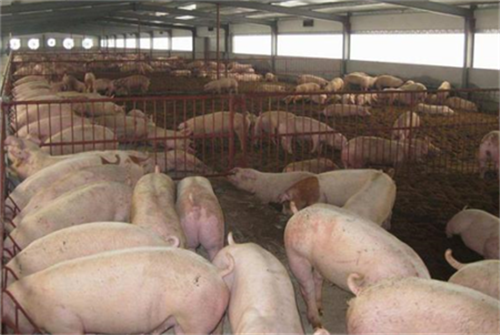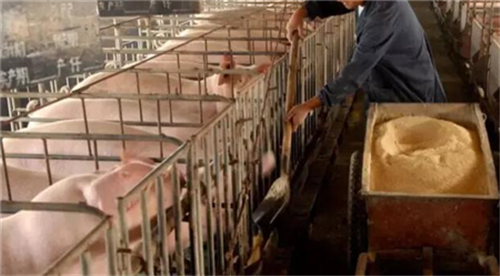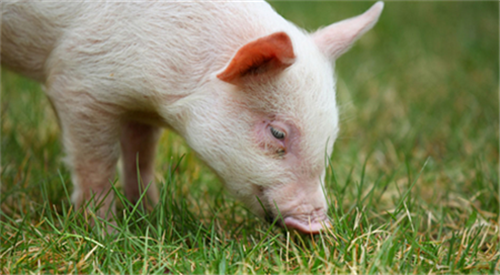Clinical diagnosis and treatment of common reproductive disorders in small and medium-sized pig farms (3)
2.6 Porcine brucellosis
The main symptoms of the disease are inflammation of reproductive organs and fetal membrane, causing abortion, infertility and local lesions of various tissues. Most of the sows miscarried in the third month of pregnancy. Before abortion, the sows showed depression, loss of appetite, restlessness, swelling of labia and breast, vaginal redness and edema, and the flow of grayish yellow or grayish brown mucus or mucous secretions from the vagina. Abortion occurred soon, and most of the aborted fetuses were stillborn. When orchitis occurs in boars, it shows unilateral or bilateral testicular swelling, hardness, heat sensation and testicular atrophy in the later stage. In some diseased pigs, abscesses occurred in pharyngeal, submandibular, cervical and inguinal lymph nodes.
The main lesions showed gray or yellowish green flocculent cellulose secretions on the serosa of the dead fetus, and a small amount of reddish fluid mixed with cellulose in the chest and abdominal cavity. The contents of the stomach are yellow or white turbid mucus and mixed with small flocs. There are small bleeding spots on some mucous membranes. The aborted pig placenta is hyperemia, bleeding and edema, the surface is covered with yellowish exudate, and some are necrotic. Pigs with brucellosis are also commonly associated with arthritis, which mainly affects the larger joints of the extremities.

2.7 Chlamydia trachomatis in pigs
The reproductive disorders of sows caused by porcine chlamydia trachomatis mostly occur in parturient sows, and the abortion rate of infected sows reaches 40% to 90%. The clinical manifestations were sudden abortion and stillbirth in the later stage of pregnancy, some stillbirths in the whole litter, endless lochia in postpartum sows and repeated infertility. The natural birth fetus is weak, screaming, shivering, unstable gait, malignant diarrhea, joint swelling, gradual weight loss, exhaustion and death. Boars infected with chlamydia are characterized by orchitis, epididymitis, urethritis, glans dermatitis and so on.
The main pathological changes were endometrial edema and hyperemia in aborted sows. Aborted fetus edema, head, neck and limbs bleeding, dead fetus subcutaneous hemorrhage; lung swelling, a large number of bleeding spots on the surface; liver swelling, hyperemia, bleeding, gray spots on the surface; pale, speckled bleeding in the kidney; bleeding spots in the intestine. The testicles of diseased boars hardened, in some cases inguinal lymph nodes enlarged, vas deferens bleeding, penile edema, bleeding or necrosis.
2.8 Porcine toxoplasmosis
Porcine toxoplasmosis causes miscarriage or stillbirth in pregnant pigs. even if live babies are born, they die or underdevelop acutely, do not suck milk, or are deformed fetus, and the sow recovers itself after delivery. The mortality rate of piglets can reach 30% to 40%, or even more than 60%.
Acute cases showed systemic lesions, enlargement of lymph nodes, liver, lungs and heart, and many bleeding spots and necrotic foci. High pulmonary edema, interlobular interstitial widening, interlobular interstitial filled with translucent jelly-like exudates; a large number of mucous foams in trachea and bronchi, some complicated with pneumonia; systemic lymph node swelling with small spot necrosis; liver swelling, grayish red, scattered spot necrosis; splenic swelling, red; mesenteric lymph nodes showed cystic swelling; gastric fundus bleeding spots, flaky or banded ulcers. Chronic cases can see edema of various organs and scattered necrotic foci.
(3) Prevention and control measures of reproductive disorder disease in pigs.
3.1 formulate reasonable immunization procedures and carry out vaccine immunization prevention
At present, there is no good treatment for porcine reproductive disorders, which mainly depends on vaccination. Porcine reproductive and respiratory syndrome, porcine parvovirus disease, porcine pseudorabies disease, porcine circovirus disease and brucellosis should be included in the overall immune program of pig farms. According to the epidemic types and characteristics of local epidemic diseases, the production characteristics of pig farms, the age of pigs, the characteristics of various vaccines, and the growth and decline law of maternal antibodies, the times of vaccination, dose and time interval were reasonably determined. In large-scale pig farms, antibody monitoring should be carried out regularly, and the immune procedure should be adjusted in time according to the antibody detection results.
- Prev

Clinical diagnosis and treatment of common reproductive disorders in small and medium-sized pig farms (2)
Clinical diagnosis and treatment of common reproductive disorders in small and medium-sized pig farms (2)
- Next

Clinical diagnosis and treatment of common reproductive disorders in small and medium-sized pig farms (4)
Clinical diagnosis and treatment of common reproductive disorders in small and medium-sized pig farms (4)
Related
- On the eggshell is a badge full of pride. British Poultry Egg Market and Consumer observation
- British study: 72% of Britons are willing to buy native eggs raised by insects
- Guidelines for friendly egg production revised the increase of space in chicken sheds can not be forced to change feathers and lay eggs.
- Risk of delay in customs clearance Australia suspends lobster exports to China
- Pig semen-the Vector of virus Transmission (4)
- Pig semen-the Vector of virus Transmission (3)
- Five common causes of difficult control of classical swine fever in clinic and their countermeasures
- Foot-and-mouth disease is the most effective way to prevent it!
- PED is the number one killer of piglets and has to be guarded against in autumn and winter.
- What is "yellow fat pig"? Have you ever heard the pig collector talk about "yellow fat pig"?

